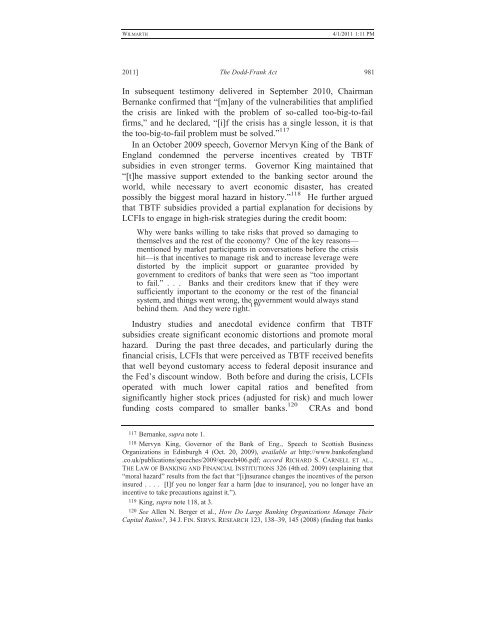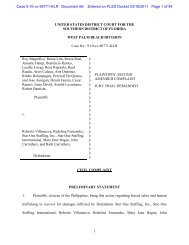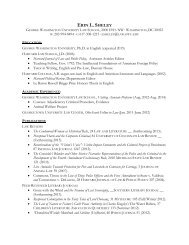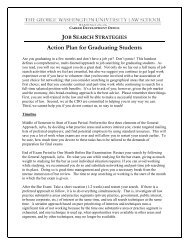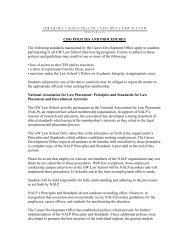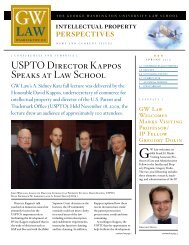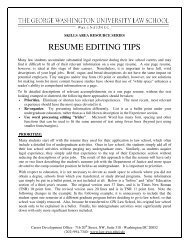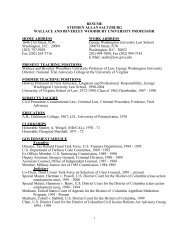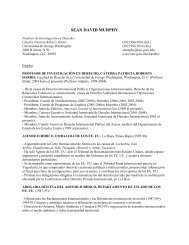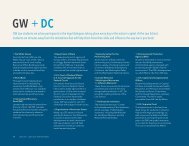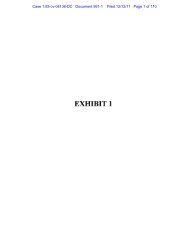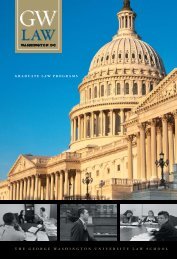CLE Materials for Panel #1 - George Washington University Law ...
CLE Materials for Panel #1 - George Washington University Law ...
CLE Materials for Panel #1 - George Washington University Law ...
Create successful ePaper yourself
Turn your PDF publications into a flip-book with our unique Google optimized e-Paper software.
WILMARTH<br />
4/1/2011 1:11 PM<br />
2011] The Dodd-Frank Act 981<br />
In subsequent testimony delivered in September 2010, Chairman<br />
Bernanke confirmed that “[m]any of the vulnerabilities that amplified<br />
the crisis are linked with the problem of so-called too-big-to-fail<br />
firms,” and he declared, “[i]f the crisis has a single lesson, it is that<br />
the too-big-to-fail problem must be solved.” 117<br />
In an October 2009 speech, Governor Mervyn King of the Bank of<br />
England condemned the perverse incentives created by TBTF<br />
subsidies in even stronger terms. Governor King maintained that<br />
“[t]he massive support extended to the banking sector around the<br />
world, while necessary to avert economic disaster, has created<br />
possibly the biggest moral hazard in history.” 118 He further argued<br />
that TBTF subsidies provided a partial explanation <strong>for</strong> decisions by<br />
LCFIs to engage in high-risk strategies during the credit boom:<br />
Why were banks willing to take risks that proved so damaging to<br />
themselves and the rest of the economy? One of the key reasons—<br />
mentioned by market participants in conversations be<strong>for</strong>e the crisis<br />
hit—is that incentives to manage risk and to increase leverage were<br />
distorted by the implicit support or guarantee provided by<br />
government to creditors of banks that were seen as “too important<br />
to fail.” . . . Banks and their creditors knew that if they were<br />
sufficiently important to the economy or the rest of the financial<br />
system, and things went wrong, the government would always stand<br />
behind them. And they were right. 119<br />
Industry studies and anecdotal evidence confirm that TBTF<br />
subsidies create significant economic distortions and promote moral<br />
hazard. During the past three decades, and particularly during the<br />
financial crisis, LCFIs that were perceived as TBTF received benefits<br />
that well beyond customary access to federal deposit insurance and<br />
the Fed’s discount window. Both be<strong>for</strong>e and during the crisis, LCFIs<br />
operated with much lower capital ratios and benefited from<br />
significantly higher stock prices (adjusted <strong>for</strong> risk) and much lower<br />
funding costs compared to smaller banks. 120 CRAs and bond<br />
117 Bernanke, supra note 1.<br />
118 Mervyn King, Governor of the Bank of Eng., Speech to Scottish Business<br />
Organizations in Edinburgh 4 (Oct. 20, 2009), available at http://www.bankofengland<br />
.co.uk/publications/speeches/2009/speech406.pdf; accord RICHARD S. CARNELL ET AL.,<br />
THE LAW OF BANKING AND FINANCIAL INSTITUTIONS 326 (4th ed. 2009) (explaining that<br />
“moral hazard” results from the fact that “[i]nsurance changes the incentives of the person<br />
insured . . . . [I]f you no longer fear a harm [due to insurance], you no longer have an<br />
incentive to take precautions against it.”).<br />
119 King, supra note 118, at 3.<br />
120 See Allen N. Berger et al., How Do Large Banking Organizations Manage Their<br />
Capital Ratios?, 34 J. FIN.SERVS.RESEARCH 123, 138–39, 145 (2008) (finding that banks


